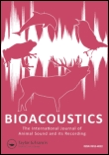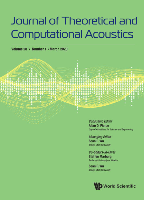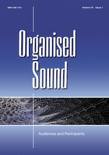
Acoustics
Scope & Guideline
Advancing Acoustics: Your Gateway to Sound Science
Introduction
Aims and Scopes
- Fundamental Acoustics:
Research in this area focuses on the underlying principles of sound, including wave propagation, sound generation, and acoustic materials. Studies often explore theoretical models and experimental validations. - Applied Acoustics and Engineering:
This scope includes practical applications of acoustics in engineering contexts, such as noise control, vibration analysis, and sound design. It often involves the development and testing of new technologies and methodologies. - Environmental and Architectural Acoustics:
Research addressing the impact of acoustics in environmental settings and architectural design, including soundscapes, noise pollution, and room acoustics. This area emphasizes both theoretical studies and case analyses. - Medical and Biological Acoustics:
This field explores the use of acoustics in medical applications, such as ultrasound imaging and therapeutic ultrasound, as well as the biological effects of sound on living organisms. - Machine Learning and Data-Driven Approaches:
Increasingly, the journal features studies that apply machine learning techniques to acoustic problems, enhancing the predictive capabilities and efficiency of acoustic analyses.
Trending and Emerging
- Machine Learning in Acoustics:
Recent publications increasingly incorporate machine learning techniques for acoustic analysis, prediction, and data interpretation, reflecting a broader trend of integrating AI into scientific research. - Sustainable and Eco-Friendly Acoustics:
There is a notable increase in studies focusing on sustainable materials and methods for noise control and sound absorption, highlighting a growing concern for environmental impacts in acoustics. - Health and Wellbeing Related to Sound:
Research exploring the effects of sound on health and wellbeing, particularly in medical settings and public health, is on the rise, indicating a growing recognition of the importance of acoustics in human health. - Acoustic Metamaterials:
The exploration of new acoustic metamaterials for various applications, including noise reduction and sound manipulation, is an emerging theme that showcases advances in material science and engineering. - Acoustics in Cultural Heritage and Preservation:
There is an increasing focus on the role of acoustics in preserving cultural heritage, including studies on historical soundscapes and the impact of acoustics on cultural experiences.
Declining or Waning
- Traditional Acoustic Measurement Techniques:
Papers focusing solely on conventional acoustic measurement methods have decreased, possibly due to the rise of more advanced and integrated technologies that provide richer data and insights. - Historical Acoustic Studies:
Research centered on historical acoustics and soundscapes, although still present, has seen a decline in frequency, suggesting a shift toward more contemporary applications and technologies. - Basic Psychoacoustics:
While psychoacoustics remains relevant, studies that focus on basic perceptual phenomena without application to modern technology or societal issues are becoming less frequent.
Similar Journals

JOURNAL OF THE AUDIO ENGINEERING SOCIETY
Transforming Ideas into Audio ExcellenceThe JOURNAL OF THE AUDIO ENGINEERING SOCIETY, published by the AUDIO ENGINEERING SOCIETY, stands at the forefront of audio engineering research and innovation. With an ISSN of 1549-4950, this esteemed journal has been disseminating high-quality research since 1970 and is recognized for its significant contributions to the field, achieving a remarkable ranking in the top quartiles, including Q1 in Music and Q2 in Engineering (miscellaneous) as of 2023. The journal's distinguished position, evidenced by its high ranking in both the Arts and Humanities and General Engineering categories, attests to its critical role in advancing scholarly discourse. Although not an open-access publication, it serves as a vital resource for researchers, professionals, and students alike, providing insights that bridge the gap between engineering principles and musical applications. For dedicated professionals in the field, the JOURNAL OF THE AUDIO ENGINEERING SOCIETY is indispensable for staying informed about cutting-edge developments and fostering innovation in audio technology.

BIOACOUSTICS-THE INTERNATIONAL JOURNAL OF ANIMAL SOUND AND ITS RECORDING
Exploring the Symphony of Nature's VoicesBIOACOUSTICS: THE INTERNATIONAL JOURNAL OF ANIMAL SOUND AND ITS RECORDING, published by Taylor & Francis Ltd, is a leading academic journal dedicated to advancing the understanding of animal sound and its ecological significance. With an ISSN of 0952-4622 and an E-ISSN of 2165-0586, this journal serves as a vital resource for researchers, conservationists, and educators interested in the intricate relationships between animal vocalizations and their environments. Spanning from its inception in 1988 to the present, the journal has built a robust portfolio of articles that enrich the fields of ecology, evolution, and behavior, earning a commendable Q2 ranking in both Ecology and Ecology, Evolution, Behavior, and Systematics categories as of 2023. Although not an Open Access publication, the journal provides important insights and findings—showcasing the critical role of sound in the lives of animals—which contributes significantly to conservation strategies and deeper ecological understanding. Researchers and practitioners can engage with cutting-edge studies, reviews, and methodologies that enhance our ability to study and interpret the acoustic behaviors of diverse species across ecosystems.

JOURNAL OF SOUND AND VIBRATION
Empowering discoveries in the world of sound and vibration.The JOURNAL OF SOUND AND VIBRATION, published by Academic Press Ltd - Elsevier Science Ltd, stands as a pivotal platform in the fields of Acoustics and Ultrasonics, Mechanical Engineering, and Mechanics of Materials. Since its inception in 1964, the journal has served as a beacon for researchers and practitioners looking to share and advance their knowledge on sound and vibration phenomena. With an impressive Q1 ranking in multiple categories and a Scopus ranking placing it in the top 10% of significant journals in related fields, it offers a high-impact venue for disseminating innovative research. The journal's well-rounded scope intersects fundamental and applied science, ensuring it remains relevant to a diverse audience, including students and professionals aiming to deepen their understanding of dynamic mechanical systems. Although primarily subscription-based, the journal's commitment to academic excellence makes it a valuable resource for all involved in the study and application of sound and vibration research, contributing significantly to advancements across engineering and physics disciplines.

Romanian Journal of Acoustics and Vibration
Advancing acoustics and vibration research for a harmonious future.Welcome to the Romanian Journal of Acoustics and Vibration, a pivotal publication produced by the Romanian Society of Acoustics, dedicated to advancing knowledge in the realms of acoustics and vibration research. With an ISSN of 1584-7284, this journal has been a vital resource for researchers, professionals, and students alike since its inception in 2012 and will continue to publish insightful contributions until 2024. The journal's rigorous selection process and scholarly articles ensure a high standard of research, contributing significantly to the Q3 and Q4 rankings in acoustics and ultrasonics as well as mechanics of materials, respectively. Although currently not an open-access journal, it provides invaluable insights into the latest developments and techniques within the fields of acoustics and vibration. Join a vibrant community that fosters innovation and scholarly dialogue, helping to shape the future of these crucial scientific disciplines.

ACOUSTICAL PHYSICS
Unraveling the Mysteries of Sound and UltrasonicsWelcome to ACOUSTICAL PHYSICS, a prominent journal dedicated to advancing the understanding of acoustics and ultrasonics. Published by PLEIADES PUBLISHING INC, this journal has been a vital platform since its inception in 1996, continuing to disseminate relevant research up until 2024. With an ISSN of 1063-7710 and an E-ISSN of 1562-6865, ACOUSTICAL PHYSICS aims to publish rigorous and impactful studies that explore both theoretical and applied aspects of acoustics. The journal currently holds a Q3 ranking within its category according to the 2023 quartiles, situating it in the 30th percentile of Scopus rankings for Acoustics and Ultrasonics. This makes it an essential resource for researchers looking to contribute to or stay informed about the evolving landscape of acoustical science. While access options are not open, the journal remains committed to ensuring high-quality peer-reviewed studies that resonate within the academic community. Join fellow professionals and students in exploring the fascinating world of acoustics and ultrasonics through ACOUSTICAL PHYSICS.

International Journal of Aeroacoustics
Elevating Standards in Aeroacoustic Science and EngineeringThe International Journal of Aeroacoustics, published by SAGE Publications Inc, is a prominent platform that explores the interplay between aeroacoustic phenomena and engineering applications. With an ISSN of 1475-472X and an E-ISSN of 2048-4003, this journal is dedicated to publishing high-quality, peer-reviewed research that addresses both fundamental and applied aspects of aeroacoustics within the fields of Acoustics and Ultrasonics, as well as Aerospace Engineering. Recognized for its scholarly contribution, it achieved a 2023 Q2 ranking in Acoustics and Ultrasonics and a Q3 ranking in Aerospace Engineering. Although it operates under a traditional access model, it remains accessible to a diverse audience through institutional subscriptions and comprehensive archives. With a convergence timeline from 2011 to 2024, the journal aims to foster innovation and collaboration among researchers, professionals, and students by disseminating cutting-edge findings that tackle current challenges in aerodynamics and noise control. As a valued resource in academia, it addresses critical issues impacting the aerospace industry and promotes advancements in engineering solutions for noise reduction.

Journal of Theoretical and Computational Acoustics
Bridging Theory and Application in Computational AcousticsJournal of Theoretical and Computational Acoustics (ISSN: 2591-7285; E-ISSN: 2591-7811), published by World Scientific Publishing Co. Pte Ltd, is a premier venue dedicated to advancing research in the interdisciplinary fields of acoustics, applied mathematics, and computer science. With its base in Singapore, this journal plays a pivotal role in disseminating significant findings and innovative theoretical frameworks that address complex acoustic phenomena through computational techniques. Recognized in the 2023 rankings where it holds a Q2 quartile in Acoustics and Ultrasonics, as well as Q3 in both Applied Mathematics and Computer Science Applications, this journal is pivotal for researchers aiming to contribute to the evolving landscape of acoustic theory and its computational applications. The open access format ensures that cutting-edge research is accessible to a global audience, reinforcing its commitment to the scholarly community. Given its convergence scope from 2018 to 2024, the journal represents a significant resource for researchers, professionals, and students who seek to deepen their understanding of theoretical and computational advancements in acoustics.

ACTA ACUSTICA
Pioneering Research in Acoustics and UltrasonicsACTA ACUSTICA, published by EDP SCIENCES S A, is an esteemed open access journal dedicated to advancing the fields of Acoustics and Ultrasonics, Computer Science Applications, Electrical and Electronic Engineering, as well as Speech and Hearing. Since its transition to open access in 2020, this journal has provided a platform for high-quality research that is freely accessible to scholars, practitioners, and students alike. With a respectable categorization in Q3 across multiple disciplines as of 2023, it reflects the ongoing commitment to disseminating relevant findings and innovations within these fields. Researchers interested in meaninful contributions to acoustic science will find ACTA ACUSTICA to be an invaluable resource that encourages collaboration and knowledge sharing, thereby fostering advancements that resonate across academia and industry. The journal aims to publish results that enhance understanding of sound phenomena and their applications, positioning itself as a pivotal channel for academic discourse.

Organised Sound
Advancing Sound Innovation through Interdisciplinary ResearchOrganised Sound, published by Cambridge University Press, stands as a pivotal journal in the fields of Music and Computer Science Applications, reflecting its commitment to advancing interdisciplinary research related to sound and music technologies. Established in 1996, this biannual journal encourages the exploration of new forms of composition, performance, and listening practices using contemporary technological advancements. With an impressive Q1 ranking in Music and a notable place within the top 79th percentile of its category according to Scopus, Organised Sound provides a unique platform for researchers, practitioners, and artists to share innovative ideas and collaborate across disciplines. The journal's rigorous peer-review process ensures high-quality contributions that are informed by the latest theoretical and practical developments. Although currently not an open-access journal, it remains highly regarded for its scholarly depth and relevance in today’s rapidly evolving soundscape.

EURASIP Journal on Audio Speech and Music Processing
Advancing the frontiers of audio and speech innovation.EURASIP Journal on Audio Speech and Music Processing is a distinguished open-access journal published by Springer, focusing on the rapidly evolving fields of audio, speech, and music processing. Established in 2006, this journal has become a pivotal platform for researchers, professionals, and students interested in advancing the state-of-the-art technologies and methodologies in acoustics and electronic engineering. With an impressive impact factor and ranking—Q2 in both Acoustics and Ultrasonics and Electrical and Electronic Engineering—this journal serves as a vital resource, disseminating innovative research findings that contribute to the academic and practical realms of audio processing. The rigorous peer-review process ensures that only high-quality manuscripts are published, reinforcing the journal's credibility and importance in the field. The journal is indexed in prominent databases, making it accessible to a global audience keen on exploring the latest developments from 2007 to 2024 and beyond. For researchers looking to share their work or stay abreast of the latest advancements, EURASIP Journal on Audio Speech and Music Processing is an essential resource that champions the interplay of science and technology in audio processing.